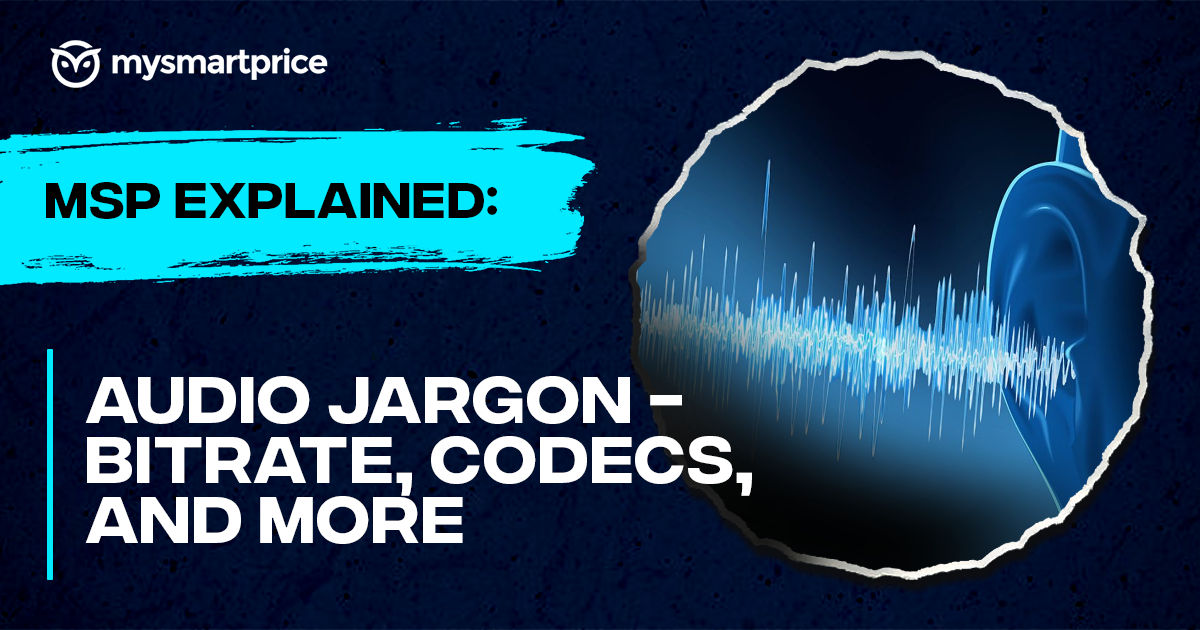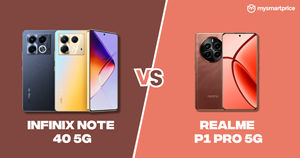
If you are in the market for a new audio device, say a headphone, soundbar, or full-fledged music system, the technical spec sheet, including terms like bitrate, codecs, and more, can be a little overwhelming, especially if you are not an audiophile. To demystify the technical jargon, in today’s edition of MSP Explained, we have compiled a list of some of the most commonly used terms in the audio world.
Audio Jargon Explained
From high-resolution audio to codecs and bitrates, here’s a list of all the popular audio jargon simplified.
Hi-Res Audio
High-resolution audio, which is popularly known as Hi-Res Audio, is a music file that surpasses the sound quality of standard CDs. Usually, the audio quality on a CD ranges around 16-bit/44.1kHz, but Hi-Res Audio files boast at least 24-bit/96kHz. The Hi-Res audio delivers music with greater depth and detail, closely mimicking the artist’s original studio recordings. For audiophiles, Hi-Res Audio represents the peak of sound fidelity, offering an immersive listening experience that captures every nuance and subtlety of the music.
Bitrate
Bitrate is the rate at which audio data is transmitted or stored. It is usually expressed in kilobits per second (kbps). Higher bitrates equal better audio quality, as more data is used to represent the sound. For example, a 320 kbps MP3 file offers a better listening experience than a 128 kbps MP3 file. Bitrate is important for streaming services, where balancing quality and data usage is essential.
Sampling Rate
The sampling rate defines how often audio is sampled per second when being recorded or played back, measured in kilohertz (kHz). CDs standardise at 44.1 kHz, meaning 44,100 samples per second. Higher sampling rates such as 96 kHz or 192 kHz, capture more detail, making the sound more accurate and nuanced. However, it’s essential to know that these benefits are usually subtle and are more noticeable in a professional environment.
Codecs
“Codec” is short for “coder-decoder.” In the realm of audio, codecs are algorithms that compress audio files to reduce their size for storage or transmission and then decompress them for playback. Standard audio codecs include MP3, AAC, and FLAC.
It’s important to remember that each codec has its strengths and weaknesses and affects audio quality and file size differently. For example, MP3 is widely compatible but lossy, meaning it sacrifices some audio quality to achieve smaller file sizes. Conversely, FLAC is a lossless codec, preserving the original audio quality but boasting larger file sizes.
AptX
AptX is a codec typically used on wireless audio devices like Bluetooth headphones and speakers. It is designed to provide high-quality audio transmission over wireless connections, ensuring the audio remains clear and crisp even over long distances. AptX is considered a high-quality codec, offering better sound quality than other popular codecs like SBC (Sub-Band Coding).
Dynamic Range
Dynamic range is the difference between an audio signal’s loudest and quietest parts. It is measured in decibels (dB), and a higher dynamic range results in a more detailed sound reproduction.
Sound Stage
Sound stage refers to the sensed spatial location and environment of sounds in a recording. A wide sound stage creates a sense of spaciousness and dimension, making it feel like the instruments and vocals are positioned around the listener. This characteristic is highly valued in headphones and speakers for its ability to create an immersive and realistic audio experience.
Bass
This refers to the low-frequency sounds that provide the rhythmic foundation of music. Powerful bass adds depth and punch, while weak bass can leave music sounding thin. It provides the deep, thumping sounds that we Indians love.
Treble
The counterpart to bass, treble represents the high-frequency sounds that add detail and crispness. It’s what allows you to hear the cymbals shimmer or the subtle nuances of a guitar string.
Resonance
This describes how sound lingers or vibrates within an object. In headphones or speakers, resonance can emphasise specific frequencies, sometimes creating an unwanted boominess or hollowness.
Sound Signature
Think of this as the overall sonic character of your headphones or speakers. It reflects how they emphasise or de-emphasise different frequencies. A “bright” sound signature might have boosted treble for a crisp listening experience, while a “warm” signature focuses on bass and mids for a richer sound.
ANC (Active Noise Cancelling)
Active Noise Cancelling (ANC) uses microphones and special circuitry to reduce unwanted ambient sounds. It generates a sound wave that is the exact negative (or anti-phase) of the ambient noise, effectively cancelling it. ANC is handy in noisy environments like flights, trains, or busy streets, allowing for a quieter and more focused listening experience.
Things to Consider When Buying an Audio Device
So now, when you go to purchase your next audio device, let’s say a headphone, speakers, or even an amplifier, keep the following factors in mind:
- Audio Codec Support: Always ensure that the device you are considering supports high-quality codecs like AptX, LDAC, or AAC, especially if you plan on using it wirelessly.
- Frequency Response: It’s also important to consider the device’s frequency response range to ensure it can accurately reproduce the full spectrum of audible frequencies.
- Bitrate and Sampling Rate: If you’re looking for high-resolution audio, ensure the device supports high bitrates (e.g., 320 kbps) and sampling rates (e.g., 96 kHz or higher).
- ANC: If you’re going to use your headphones in a noisy environment, such as while travelling, make sure that they have ANC support.
- Dynamic Range: Devices with a wide dynamic range can handle quiet and loud sounds more effectively.
- Connectivity: Decide whether you need wired or wireless connectivity (or both) and ensure that the device you are considering has all the necessary ports and is compatible with your audio sources.
Popular Headphones and Speakers: Price, Supported Codecs, and More
| Device Name | Price in India | Supported Codecs | Bitrate and Sampling Rate | Dynamic Range |
| Sony WH-1000XM5 Wireless Headphone | Rs 29,9901 | SBC, AAC, LDAC | 20 Hz – 20,000 Hz (44.1 kHz Sampling) / 20 Hz – 40,000 Hz (LDAC 96 kHz Sampling, 990 kbps) | 20 Hz – 40,000 Hz |
| Sony WH-XB900N Wireless Headphone | Rs 16,990 | SBC, AAC, aptX, aptX HD, LDAC | 20 Hz – 20,000 Hz (44.1 kHz Sampling) / 20 Hz – 40,000 Hz (LDAC 96 kHz Sampling, 990 kbps) | 20 Hz – 20,000 Hz |
| JBL E45BT Wireless Headphone | Rs 5,499 | SBC, AAC | Not Available | Not Available |
| Sony SRS-XG300 X-Series Wireless Portable Bluetooth Party Speaker | Rs 29,990 | SBC, AAC, LDAC | 20 Hz – 20,000 Hz (44.1 kHz Sampling) / 20 Hz – 40,000 Hz (LDAC 96 kHz Sampling, 990 kbps) | 20 Hz – 40,000 Hz |
| JBL Flip 6 Wireless Portable Bluetooth Speaker | Rs 9,999 | SBC, AAC | 65 Hz – 20 kHz | Not Available |
| Bose SoundLink Flex Bluetooth Portable Speaker | Rs 14,500 | SBC | Not Available | 20 Hz – 20 kHz |















